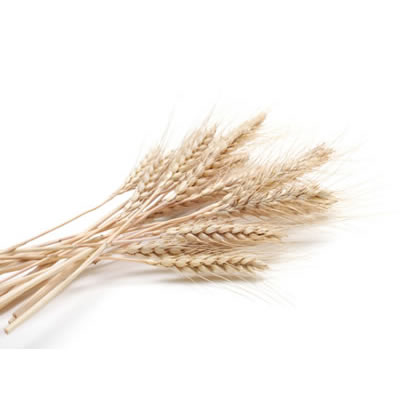White Whole Wheat Flour
What is White Whole Wheat Flour?
White whole wheat flour is the powder obtained from the milling of whole white wheat kernels. It has a light golden color, and a sweeter, milder flavor than typical whole wheat flour.1
- Both soft or hard white wheat kernels can be milled into white whole wheat flour.
- The flour can be used in a variety of baked goods, such as breads, rolls, cakes and cookies.
- One distinct application of white whole wheat flour is in breakfast cereals and noodles.1
Origin
White whole wheat flour is obtained from whole white wheat (Triticum aestivum) kernels with the bran, endosperm and germ in their original proportion. White wheat is a new class of wheat grown in North America. Its commercial development is fairly recent and is driven by the rediscovered health benefits of wheat dietary fiber and germ proteins.2
Function
White whole wheat flour has several functions in baked goods:1
- Structure builder: its gluten and starch provide structural components of baked goods.
- Liquid absorption: the wheat driers (starches, proteins and gums) absorb moisture to form cohesive mass.
- Flavor: provides a milder, sweeter flavor, due to the presence of the bran and germ.
- Color: provides a characteristic pale yellowish color, characteristic of its bran pigments. It also contributes subtract (protein and sugar) for the Maillard reaction.
- Nutritional value: provides dietary fiber as well as proteins, minerals and vitamins.
Nutrition
Nutritional value per 100g serving is:2
| Component | Grams |
| Carbohydrate | 69.34 |
| Water | 14.00 |
| Protein | 12.73 |
| Lipid | 2.41 |
| Ash | 1.52 |
White whole wheat flour is low in total fat, saturated fat and cholesterol. Consumption of whole wheat may reduce the risk of heart disease and certain cancers and may aid in weight management.2
Commercial production
This flour is produced commercially by the following process:1,2
- Cleaning: removal of impurities (other grains, branches, rocks, etc) using a combination of air currents and sieves.
- Debranning: removal of the most external layer of the bran.
- Blending: to maintain seasonal quality, several wheat varieties are combined for the optimum blend.
- Conditioning: water is added up to a moisture content of 12-14% to soften the grain for easier grinding.
- Grinding: kernels pass through several roller mills to reduce their size, the reduced fractions obtained from different grinding stages are later recombined.
- Heating: the bran fraction is heated before recombination, in order to inactive lipases.
- Packaging: flour is packed in plastic bags, paper bags or sacks for transportation.
Application
White whole wheat flour is used in a wide range of applications for baked goods, from bread to noodles. Originally, its use was intended to satisfy the noodles and steamed bread markets.3
It is used primarily for the manufacture of bread and baked goods that require a soft crumb texture, sweet-mild flavor and pale color with the nutritional properties of whole wheat.3
Considerations for baking:
- Additional vital wheat gluten may be required for artisan varieties.
- Not ideal for high sugar to flour ratio
- It can be used with part cake flour, to make the claim of “Made with Whole Grain.” However, protein content must be adjusted.
Regulations
White whole wheat flour is not specifically regulated by the FDA. However, it is covered under whole wheat flour, non-durum wheat, and thus is considered GRAS by the FDA.4
The European Union has established a regulation for health related issues such as: contaminants, pesticides, heavy metals, mycotoxins and additives. However, the physical and chemical parameters of the flours are regulated by each nation.5
References
- Figoni, P. How Baking Works: Exploring The Fundamentals Of Baking Science. 2nd ed., John Wiley & Sons, Inc., 2008.
- Finnie, S, and Atwell, W.A . Wheat Flour. 2 nd ed., American Association of Cereal Chemists, Inc (AACC), 2016.
- Khan, K and Shewry, P.R. Wheat: chemistry and technology. 4 th ed., AACC International, 2009.
- Food and Drug Administration (FDA). US Department of Health and Human Services. CFR Code of Federal Regulations Title 21, Part 137 Cereal Flours and Related Products, https://www.accessdata.fda.gov/scripts/cdrh/cfdocs/cfcfr/CFRSearch.cfm?fr=137.200 . Accessed 28 August 2020.
- European Commission (EC). Commission Regulation NO 1881/2006 setting maximum levels for certain contaminants in foodstuffs. Official Journal of European Union, 19 December 2006.


